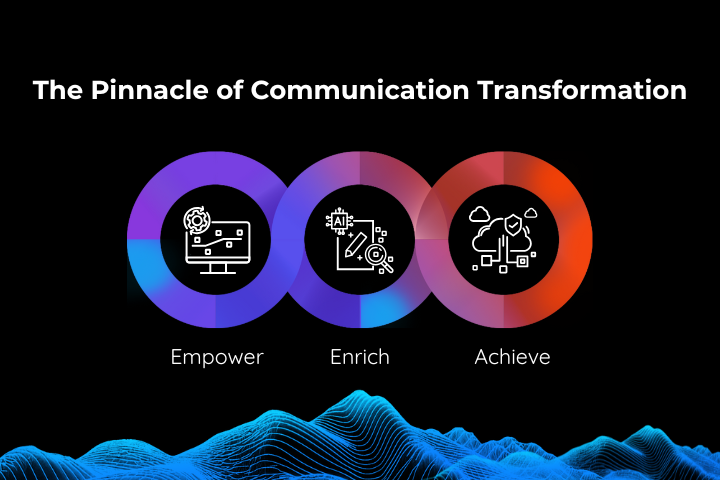
As a leading solution and service provider in the Customer Communications Management (CCM) market, Quadient Inspire's largest implementation and delivery partner - Macrosoft, develops leading-edge customer experience applications. As part of their corporate CX strategy, Macrosoft conducts an annual CCM survey and shares the results with the industry. You can download the 2021 Survey Report here.
I am thrilled to announce that the results of Macrosoft’s 2022 Survey, conducted in March of this year, have officially been released. Harnessing the combined experience of 243 CCM practitioners across 88 companies that reportedly own a CCM solution, the 2022 Survey is designed to inform your future communication strategy and ensure you're keeping up with fellow industry professionals. This blog explores key insights from the report and top-level themes. For complete survey results and analysis, access the report or watch the webinar.
More Companies Using a Single CCM System for Multiple Channels
This year’s most prominent finding was the number of companies using a single CCM system for multiple channels instead of separate systems for individual channels. The 2021 results found that 50% of companies were using a single system to manage multiple communication channels. In 2022, that percentage increased to 60% - a 20% increase in companies who have centralized their CCM technologies in the past year. As companies centralize their technology, they become more nimble as the redundant work of cross-channel implementation erodes, removing the risk of mistakes. Quadient has seen Macrosoft implementations improve the quality and consistency of communications, while reducing risk of cross-channel inconsistencies.
Print Remains a Separately Managed, Standalone Channel for Many
Despite the increasing consolidation efforts, not all channels are converging to a single system at the same rate. Print channels often remain a standalone channel, with 67% of respondents indicating that they generate printed mail documents from a standalone system. Some organizations do this because it fits into an outsourcing strategy, while others forego the benefits of consolidating communication technology to reduce costs, avoid confusion, and decrease time to market. This is a missed opportunity to align paper-based communications to the other digital channels that are consolidating.
Modern Migration Technology Lifts the Barriers to CCM Consolidation
The overall rate of standalone channel systems decreased from 66% in 2021 to 58% in 2022, evidencing the increase in channel consolidation, driven by digital channel integration. Now that the market leaders have moved to consolidate systems, most CCM practitioners are beginning to follow suit, as rapid migration technology, like Quadient's InspireXpress, proves its ability to reduce the cost, time, and effort to consolidate numerous channels onto a single CCM system.
CCM Awareness & Value Extends Across Business Departments
The survey examined how the costs of CCM are attributed, and how the benefits of CCM are realized within the organization. Operations teams report the most significant benefit from CCM activities, but do not contribute as much budget as the benefits they experience. Similarly, Sales teams report benefits of CCM that are disproportionate to the budget contributed. Technology IT teams report the highest instance of “neither paying for nor benefiting from” CCM investments. This indicates a shift of technology spend away from technology teams to the business, which aligns with industry trends. The takeaway for me here is that the benefits of CCM are now being realized across the wider organization.
Leaders understand that customer journeys often span cost centers. These leaders are ensuring that marketing communications, onboarding communications, regular communications, and support communications are aligned in terms of design, voice, and consistency across channels.
Deep Integration of Legacy Systems Top Barrier to CCM Unification
As we look at the increasing awareness of the importance of CCM across departments, respondents were asked to identify barriers to unifying their CCM systems. The question, “what is preventing moving to an omnichannel CCM platform?” had interesting results. The “major impediments” were respondents being “unsure what is the best CCM platform to move to” (35%) and “project being too long or difficult” (35%.) The primary impediment was “current systems too tightly integrated,” with 59% of respondents identifying this as a barrier.
Many CCM practitioners, especially ones with legacy technology, are often so busy keeping their old systems operational that they are unaware of significant advances available from modern technology like Quadient’s Inspire.
This is no surprise, as deeply integrated legacy CCM systems are often light on documentation and built with fragile components. Quadient has long been ranked as a leader in CCM technology. To address the legacy CCM migration challenge, Quadient has developed AI-based migration technology and methods to shorten migration time. Also, Quadient has created CCM technology that can integrate with many types of data, document systems, and other integration points to deliver robust, omnichannel communications, while minimizing integration effort.
A Competitive Benchmark Tool to Guide Future Communications Strategies
It's always great to see what the market thinks of CCM technology within their business. I want to thank the Macrosoft team for putting in the effort to gain this insight from people at companies like yours. This information gives you a sense of where you are versus your peers. It lets you see what is worrying other people. It helps you plan a better customer experience for your clients.
Quadient and Macrosoft want to thank you for exploring key insights from Macrosoft’s 2022 CCM Survey. We look forward to seeing the 2023 results!






